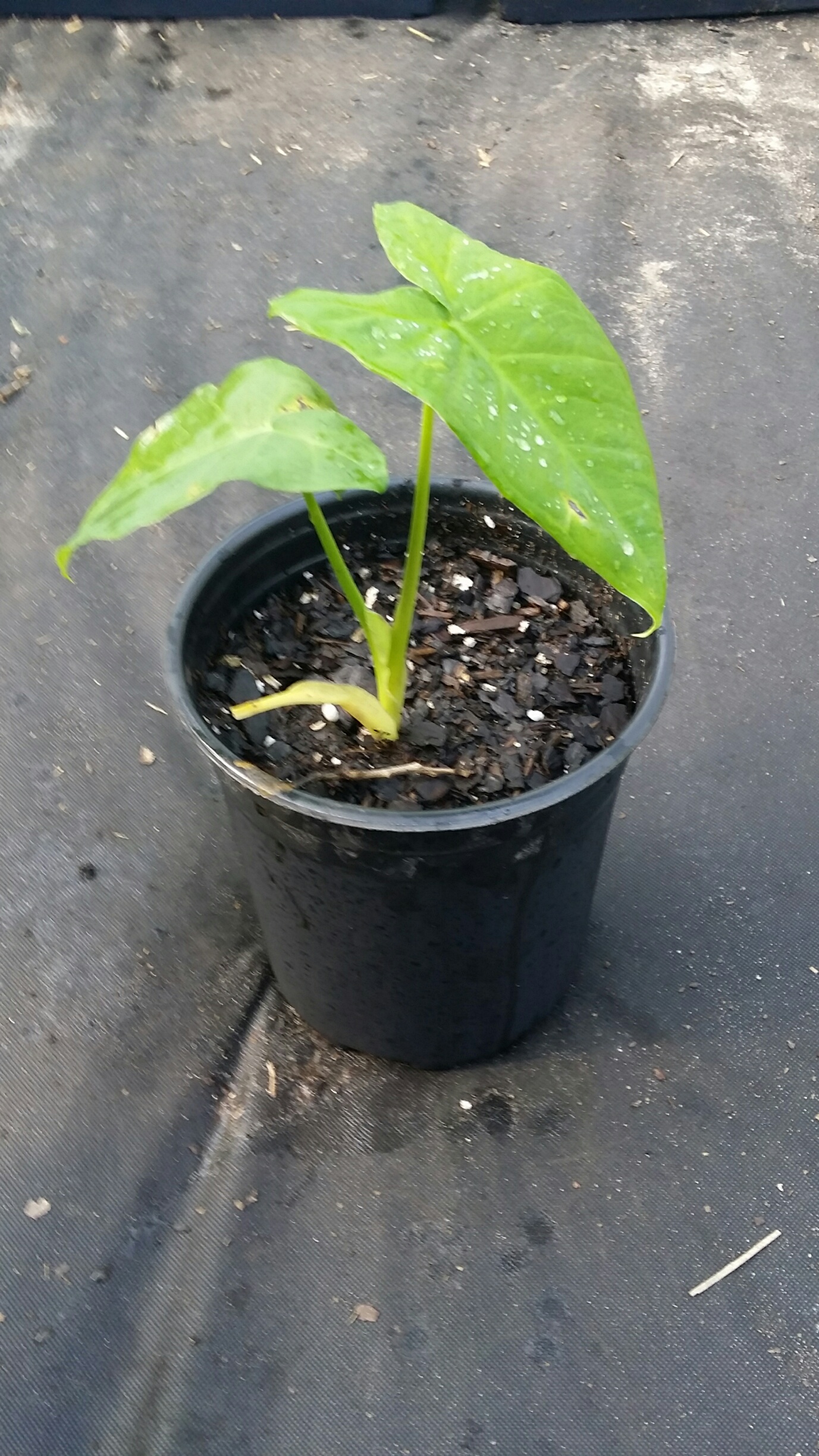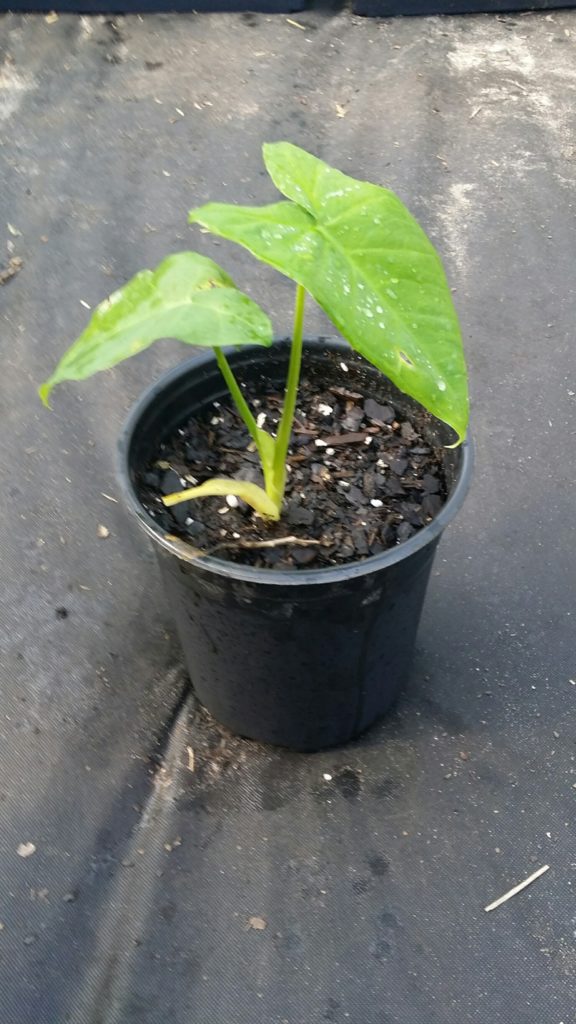
Malanga root, also known as elephant ear, is a subtropical/tropical plant, but can be grown in a variety of climates, including Florida. It is a staple food in many parts of the world and is valued for its high carbohydrate and protein content, as well as its versatility in cooking. Malanga root can be cooked in a variety of ways, including boiling, roasting, or frying, and it can be used in soups, stews, and other dishes just like a potato.
Malanga root plants are known for their large, heart-shaped leaves and their ability to tolerate a wide range of growing conditions. They are well-suited for use as a survival crop or in a food forest, as they are relatively easy to grow and can provide a reliable source of food in times of need. They can stay in the ground like a food savings account until you need it.
Here are some tips for planting and care:
Malanga root can be grown from seeds or from root cuttings. To start seeds, soak them in water for 24 hours, then plant them about an inch deep in well-draining soil. Keep the soil moist until the seeds germinate, which usually takes about a week. Root cuttings can be started by dividing the root into small pieces and planting them about an inch deep in the soil.
Malanga root prefers full sun to partial shade and well-draining soil. It is tolerant of a wide range of soil types, but it will grow best in soil that is rich in organic matter and has a pH between 6.0 and 6.5.
Water your malanga root regularly, especially during dry spells. The plant is drought-resistant, but it will grow more vigorously with regular watering.
Fertilize your malanga root with an all-purpose fertilizer every few months. You can also add compost or well-composted manure to the soil to provide additional nutrients.
Malanga can grow quite quickly and may need to be pruned regularly to keep it from getting too large. Prune the plant in the spring, cutting off any dead or damaged leaves and shaping it to your desired size.
Malanga root is generally pest-resistant, but it can be susceptible to slugs and snails. If you notice any pest problems, you can use slug bait or other pest control methods to get rid of the pests.
By following these tips, you can successfully grow malanga root in Florida as a survival crop or in a food forest. The plant will provide a reliable and nutritious source of food, and it can also contribute to the overall health and diversity of your ecosystem.
Taro

Taro root is a tropical plant that is native to Southeast Asia but can be grown in a variety of climates, including Florida. It is a staple food in many parts of the world and is valued for its high carbohydrate and protein content, as well as its versatility in cooking. Taro root can be cooked in a variety of ways, including boiling, roasting, or frying, and it can be used in soups, stews, and other dishes.
Taro root plants (Colocasia esculenta), may also be known by many other common names like malanga, eddoe, dasheen, or Hawaiians call it kalo and process it into poi. Taro is known for its large, heart-shaped leaves and their ability to tolerate a wide range of growing conditions. They are well-suited for use as a survival crop or in a food forest, as they are relatively easy to grow and can provide a reliable source of food in times of need.
Here are some tips for planting and care:
Taro root can be grown from seeds or from root cuttings. To start seeds, soak them in water for 24 hours, then plant them about an inch deep in well-draining soil. Keep the soil moist until the seeds germinate, which usually takes about a week. Root cuttings can be started by dividing the root into small pieces and planting them about an inch deep in the soil.
Taro root prefers full sun to partial shade and well-draining soil. It is tolerant of a wide range of soil types, but it will grow best in soil that is rich in organic matter and has a pH between 6.0 and 6.5.
Water your taro root regularly, especially during dry spells. The plant is drought-resistant, but it will grow better with regular watering.
Fertilize your taro root with an all-purpose fertilizer every few months. You can also add compost or well-rotted manure to the soil to provide additional nutrients.
Taro root can grow quite quickly and may need to be pruned regularly too to keep it from getting too large. Taro root is generally pest-resistant, but it can be susceptible to slugs and snails. If you notice any pest problems, you can use slug bait or other pest control methods to get rid of the pests.
Taro must be cooked or prepared in another manner due to the oxalate crystals found in the plant. Taro is a starchy root vegetable that is commonly used in a variety of dishes around the world. It has a slightly sweet and nutty flavor and a creamy, potato-like texture when cooked. Here are some ways to cook and eat taro root:
Boiling: One of the most common ways to cook taro root is to boil it. Peel the taro root and cut it into small, evenly-sized pieces. Bring a pot of water to a boil, add the taro root, and cook until it is tender, about 15-20 minutes. Drain the taro root and serve it as a side dish, or use it in soups, stews, or other dishes.
Roasting: Taro root can also be roasted in the oven for a slightly sweet and nutty flavor. Peel the taro root and cut it into small, evenly-sized pieces. Toss the taro root with a little oil and season with salt and any other desired seasonings. Spread the taro root out on a baking sheet and roast it in the oven at 400°F for 20-25 minutes, or until it is tender and golden brown.
Frying: Taro root can be sliced or cubed and fried in oil for a crispy and flavorful snack or side dish. Peel the taro root and cut it into small, evenly-sized pieces. Heat some oil in a frying pan over medium-high heat and add the taro root. Cook the taro root until it is tender and golden brown, about 5-7 minutes. Drain the taro root on paper towels and season with salt or any other desired seasonings.
Mashing: Taro root can be mashed and used as a replacement for mashed potatoes or other mashed vegetables. Peel the taro root and cut it into small, evenly-sized pieces. Boil the taro root until it is tender, then drain it and mash it with a potato masher or a fork. Season the mashed taro root with salt and any other desired seasonings and serve it as a side dish.
These are just a few examples of how to cook and eat taro root. There are many other ways to use it in cooking, and it can be a delicious and nutritious addition to a wide variety of dishes.
This food forest plant will provide a reliable and nutritious source of starch and calories.